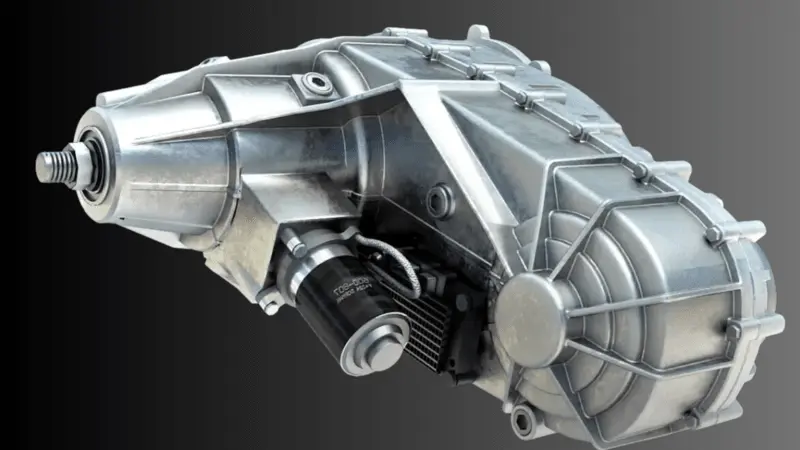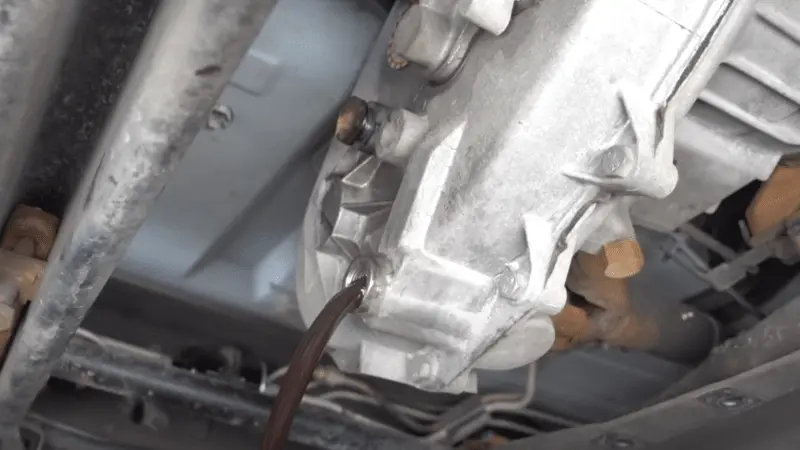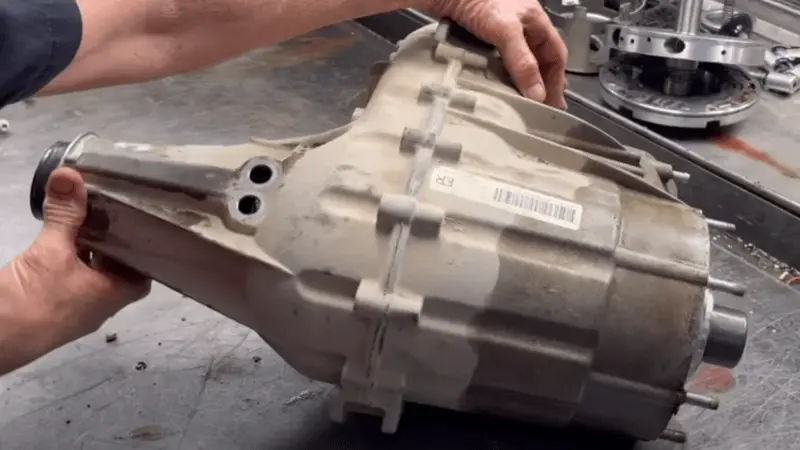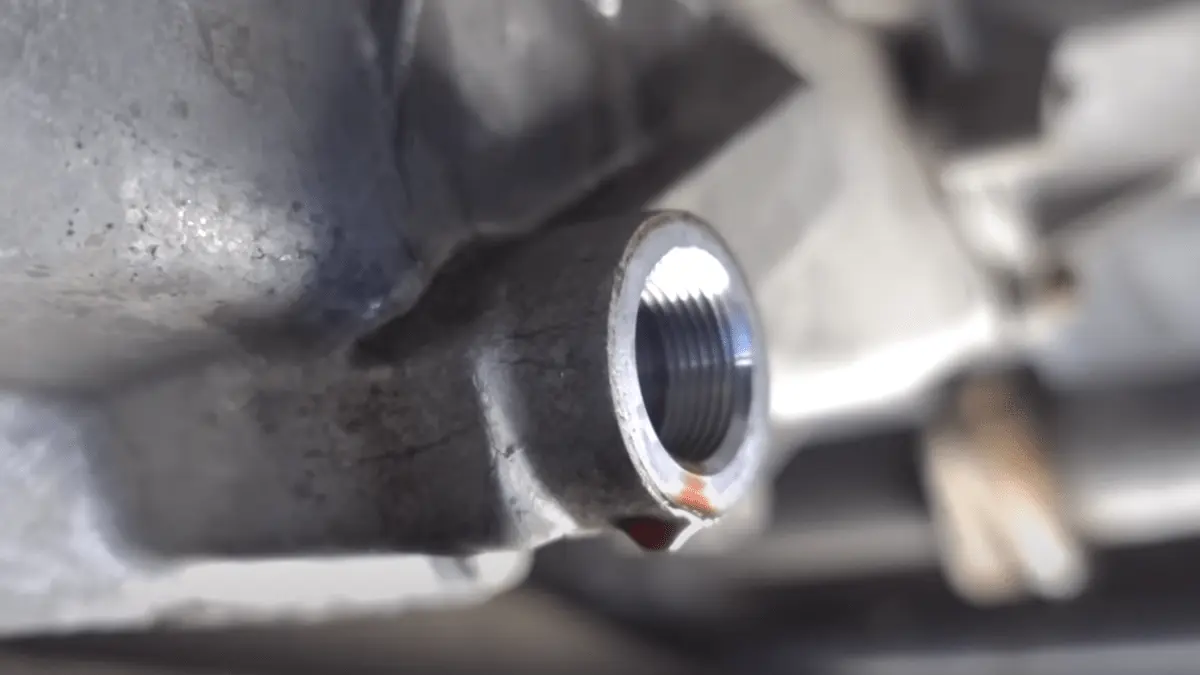Your vehicle’s transfer case is a critical component in four-wheel drive systems, ensuring smooth power distribution between the front and rear axles. But what happens if transfer case is low on fluid?
If your transfer case is low on fluid, it can increase friction, overheating, and potential damage to the internal components. Symptoms may include difficulty shifting gears, unusual noises, and compromised four-wheel drive operation. To maintain your vehicle’s performance, it’s essential to maintain proper transfer case fluid levels.
In this blog post, we dive into this essential aspect of vehicle maintenance. We’ll explore the implications of low transfer case fluid, from compromised performance to potential damage.
What Happens If Transfer Case Is Low On Fluid?

If the transfer case is low on fluid, several problems may arise:
- You might experience difficulty shifting gears, as low or contaminated transfer case fluid can hinder the transmission’s gear-changing capabilities.
- Your vehicle may suddenly lose traction in four-wheel drive mode, reducing its off-road capabilities and stability on slippery surfaces.
- You may hear unusual noises while driving as the transfer case becomes noisier due to the loss of its lubricating properties.
To avoid these issues and maintain your vehicle’s performance, it’s crucial to regularly check and maintain the appropriate fluid levels in the transfer case.
RELATED: What Does A Bad Transfer Case Sound Like
Can You Drive with a Transfer Case with Low Fluid?
Driving with a transfer case that has low fluid is not advisable. The transfer case is critical in operating your vehicle’s four-wheel drive system, and adequate lubrication is essential for its smooth functioning. Low transfer case fluid can increase friction, overheating, and potentially severe damage to the transfer case and related components.
Continued driving with low fluid levels may result in difficulty shifting gears, unusual noises, vibrations, and a compromised four-wheel drive system. In some cases, it can lead to a complete failure of the transfer case, leaving your vehicle without the ability to engage four-wheel drive.
RELATED: Can I Still Drive With Service 4WD Light On
Symptoms of a Low Transfer Case Fluid

When the transfer case fluid is low, it can lead to various symptoms and issues. Here are six common symptoms of low transfer case fluid:
- Difficulty Shifting Gears: One of the earliest signs of low transfer case fluid is difficulty shifting gears, especially when engaging in four-wheel drive. You may experience resistance or grinding when switching between 2WD and 4WD modes. This can make it challenging to use your vehicle’s four-wheel drive capabilities effectively.
- Unusual Noises: Low transfer case fluid can cause the transfer case to become noisier. You may hear grinding, whining, or clunking while driving, particularly in four-wheel drive. These noises result from increased friction and reduced lubrication within the transfer case.
- Overheating: Inadequate lubrication can increase friction and heat within the transfer case. Over time, this can cause the transfer case to overheat. If you notice a burning smell or feel excessive heat coming from the transfer case area, it could be a sign of low fluid levels.
- Loss of Four-Wheel Drive Traction: Low transfer case fluid can compromise the functionality of your vehicle’s four-wheel drive system. Sometimes, you may suddenly lose traction and find it difficult to navigate slippery or off-road terrain. This can reduce your vehicle’s performance and stability in challenging driving conditions.
- Leakage Under the Vehicle: Low fluid levels can result from leaks in the transfer case or its associated components. If you notice fluid spots or puddles under your vehicle, it’s essential to investigate the source of the leak and address it promptly. Ignoring leaks can lead to further fluid loss and potential damage to the transfer case.
- Vibrations and Shuddering: As the transfer case becomes inadequately lubricated, you may experience vibrations or shuddering, especially when using four-wheel drive. These sensations result from increased friction and reduced smoothness in the transfer case’s operation.
Can You Run With A Transfer Case Fluid Without Fluid?
Running a transfer case without fluid is highly discouraged and can lead to severe damage to your vehicle’s four-wheel drive system. The transfer case relies on lubrication to reduce friction and ensure the smooth operation of its internal components, such as gears, shafts, and chains. Without proper fluid levels, these components can overheat, wear rapidly, and eventually fail.
Driving without transfer case fluid can result in difficulty shifting gears, strange noises, vibrations, and a compromised four-wheel drive system. In extreme cases, it can lead to a complete breakdown of the transfer case, rendering your vehicle incapable of engaging four-wheel drive.
To maintain the performance and longevity of your four-wheel drive system, it’s essential to check and maintain proper transfer case fluid levels. Suppose you suspect your transfer case is low on fluid or has experienced a significant loss. In that case, it’s advisable to address the issue promptly by replenishing the fluid and inspecting for potential leaks. Failure to do so can result in costly repairs and reduced off-road capabilities.
RELATED: How Long Can You Drive With A Bad Transfer Case
When To Replace Your Vehicle’s Transfer Case?

Replacing a vehicle’s transfer case is necessary in several situations. If you notice symptoms like grinding noises, difficulty shifting gears, or vibrations during four-wheel drive operation, it may indicate transfer case issues. Severe damage, leakage, or excessive wear can also warrant replacement.
Additionally, if your transfer case is beyond repair or not cost-effective to fix, replacement is the best option. Regular maintenance and fluid checks can help extend its lifespan. Always consult with a qualified mechanic to assess the condition of your transfer case and determine whether replacement is necessary based on the specific issues your vehicle is experiencing.
FAQs
1. Can I Continue Driving With A Transfer Case Low On Fluid?
Driving with low transfer case fluid is not recommended as it can lead to severe issues and potential damage.
2. How Can I Check The Transfer Case Fluid Level In My Vehicle?
Refer to your vehicle’s owner’s manual for specific instructions on checking the transfer case fluid. It typically involves locating the fill plug and using a dipstick or visual inspection.
3. What Are The Symptoms Of A Transfer Case Low On Fluid?
Symptoms may include difficulty shifting gears, unusual noises, overheating, vibrations, and a compromised four-wheel drive system.
4. How Often Should I Inspect And Replace Transfer Case Fluid?
Consult your owner’s manual for recommended maintenance intervals. Generally, it’s advisable to inspect and replace transfer case fluid as part of regular vehicle servicing.
5. Can I Top Off The Transfer Case Fluid, Or Should I Perform A Complete Fluid Change?
You can often top off the transfer case fluid if it’s slightly low. However, if the fluid is significantly depleted or contaminated, a complete fluid change is recommended.
Final Words
A well-maintained transfer case is crucial for the smooth operation of your vehicle’s four-wheel drive system. As we’ve explored in this post, the repercussions of low transfer case fluid are significant. Ignoring this vital component’s fluid levels can result in performance issues, overheating, and even extensive damage. Regular inspections and proper maintenance are essential to keep your transfer case functioning optimally. Don’t let low transfer case fluid damper your off-road adventures or compromise your vehicle’s stability. Stay informed, check your transfer case fluid regularly, and ensure it’s at the appropriate level. By doing so, you’ll guarantee that your four-wheel drive system is ready to tackle any terrain with confidence.

Eric L. Friedman is a car expert who has worked on Chevy and GMC trucks for over 10 years. He started AutoYolo to help people fix their own cars. On the blog, he shares easy tips, step-by-step guides, and repair advice to make car problems less stressful and more affordable.

